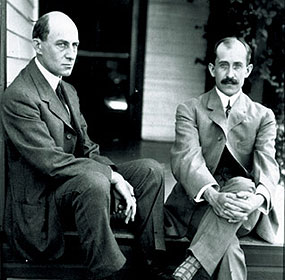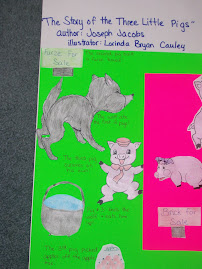Title: "Swamp Angel"
Author: Anne Isaacs
Illustrator: Pul O. Zelinsky
Publisher: Puffin Books, 1994
Genre: Traditional Literature Picture Book, Caldecott Honor Book
Grade: 2-3
"Swamp Angel" begins with a couple who had just given birth to their daughter, Angelica Longrider, on August 1, 1815. She grew to be much larger than everyone else in Tennessee so Angelica began helping people in trouble. She even helps a wagon out of the mud. Then, one summer day, there was a huge bear, Thundering Tarnation, that came around with a "bottomless appetite for settler's grub." Every man in Tennessee tried to kill Thundering Tarnation, but none of them were successful. Eventually Swamp Angel (Angelica) was the only one who hadn't met up with Tarnation so she finds him and they begin to fight. They wrestled night and day, even in their sleep. While they were sleeping they began snoring. Their snoring was so loud it shook the forest and caused a tree to fall right down onto Tarnation. That night Tennessee had the biggest celebration and everyone ate Tarnation.
I thought this book was okay. It wasn't really one of my favorites. I'm more of the fairy tale type of person. It was still a good book though. I loved how this "swamp angel" was so strong she could do anything. She even rescued her town from Tarnation. The illustrations were my favorite part. To make these illustrations, Zelinsky painted with oil on cherry, maple, and birch veneers. Each picture is in an oval shape with the remainder of the page looking like piece of wood. Zelinsky does a great job of making sure all the other objects in the picture are small, life-sized and then the Swamp Angel is a lot bigger than everything else. Everything looks so real. For example, on the cover the Swamp Angel's feet look like real, true-to-life feet.
I would use this book in my classroom to teach my students about tall tales. I could include this book in a whole unit on tall tales. This book could also be used to show my students about frontier and pioneer life and how important it was for the settlers to save their food until winter.
Subscribe to:
Post Comments (Atom)
















1 comment:
Thanks for your comments; try to explain, in more detail, why it wasn't your favorite...be specific! Great reference to the illustrations. They are quite spectacular aren't they? : )
Post a Comment